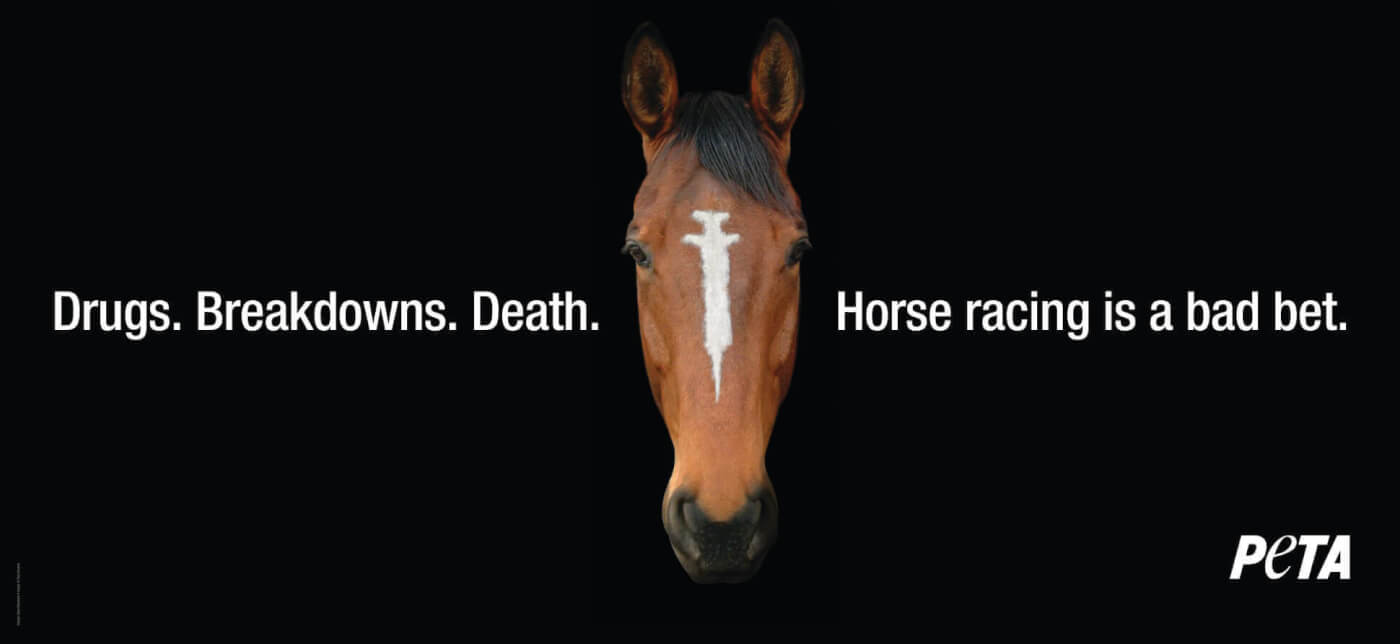As for the Kentucky Derby, Las Vegas gambling venues and the racing industry should take a lesson from the National Football League.
Horse racing, the only “sport” that comes with whippings and a daily death toll, is spiraling into oblivion. Most people in America have never been to a track and will never go. Derby day brings the only hour in the year when the general public becomes fleetingly aware of Thoroughbred racing.
The reason is simple. Most people don’t want to see horses breaking their legs after they’ve been whipped to make them run around a track. Statistics from the Nevada sports books illustrate this. In 1998, when Real Quiet nearly won the Triple Crown, more than $736 million was bet. The following years brought high-profile tragedies with the breakdowns and deaths of Barbaro and Eight Belles as well as a series of exposés, including PETA’s video of trainer Steve Asmussen’s misuse of medication, revealing racing’s abuse of horses.
By 2014, when California Chrome followed in Real Quiet’s footsteps and nearly captured the Triple Crown, the total amount wagered had plummeted to $344 million.
The racing industry and sports books like those at Caesar’s Palace and the Bellagio, where bettors can place wagers on races shown on video screens, have the power to make a difference. As the NFL does before Sunday games, sports books should release injury reports on all horses running in the Derby.
Despite being federally regulated through the Interstate Horse Racing Act, these gambling venues fail to disclose information that would affect bettors’ decisions, and the racing industry is complicit in this secrecy. Unlike the NFL, racing has no policy requiring disclosure of such critical information. This lack of transparency has an unfair impact on bettors, as only select industry insiders know the horses’ physical problems, while the general betting public is kept in the dark.
More importantly, injury reports could protect horses. Although racing leaders would have you believe otherwise, they know exactly why most horses fracture legs on the track. Research funded by the industry shows that 90 percent of horses who break down had pre-existing injuries. It’s common knowledge now that medications can be used to mask injuries and keep injured horses running when they should be recuperating. Lame horses don’t look lame. They race, they break down and they spend their last minutes of life behind a hastily erected screen on the track. That way, bettors don’t see them dying in the dirt.
The release of records detailing all conditions and medications in the month leading up to the Derby would reveal which horses should not be running at Churchill Downs on May 6. It should begin with the Derby and after that be required for every race in all jurisdictions.
Currently, owners and trainers chasing a big purse or trying to offload horses in a claiming race will risk the animals’ safety. But if medication and injury records were more transparent, there would be no hiding the Thoroughbreds with sore knees and feet who’ve been shot up with painkillers, muscle relaxants, anti-inflammatory medications and performance-enhancing drugs, like thyroid hormone. Trainers would be exposed if they tried to run a sore or injured horse who was still feeling the effects of multiple medications. Track management could make sure these horses were recuperating and not racing. The release of all these records would also aid racetrack veterinarians in conducting their pre-race examinations. They would know in advance what problem areas to focus on and could scratch high-risk horses.
Right now, owners, trainers and veterinarians who are complicit in the deaths of more than 1,000 horses on tracks every year are getting away with dangerous, irresponsible behavior. Transparency is the first step in ending this abuse.
*Kathy Guillermo is a senior vice president for People for the Ethical Treatment of Animals*






